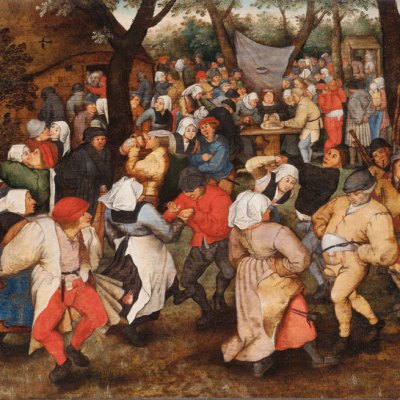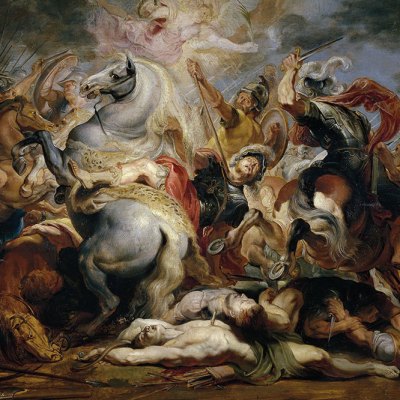
 ‘Four things to see’ is sponsored by Bloomberg Connects, the free arts and culture app. Bloomberg Connects lets you access museums, galleries and cultural spaces around the world on demand. Download the app here to access digital guides and explore a variety of content.
‘Four things to see’ is sponsored by Bloomberg Connects, the free arts and culture app. Bloomberg Connects lets you access museums, galleries and cultural spaces around the world on demand. Download the app here to access digital guides and explore a variety of content.
Each week we bring you four of the most interesting objects from the world’s museums, galleries and art institutions, hand-picked to mark significant moments in the calendar.
On the 350th anniversary of the death of John Milton, we take inspiration from the epic poem Paradise Lost – one of the most important poems in the English language. First published in 1667, it addresses the themes of free will and the fall of man by retelling the biblical story of Eden, using this as a way to also explore forms of government and tyranny. Milton narrates the lives of Adam and Eve, depicting their temptation and subsequent expulsion from Paradise, as well as the life of the fallen angel Satan.
The idyllic beauty of Eden and the tragic downfall of its inhabitants have captured the imagination of countless artists, depicting dramatic moments of temptation and rebellion and the complexities of desire and loss. In celebration of Paradise Lost, we explore four artworks that reflect these enduring themes, which have shaped visual culture in the West in a profound way.
Installation shot of Adam (1970) by Alexander Liberman at the Storm King Art Center in New Windsor. Photo: Jerry L. Thompson; © The Alexander Liberman Trust
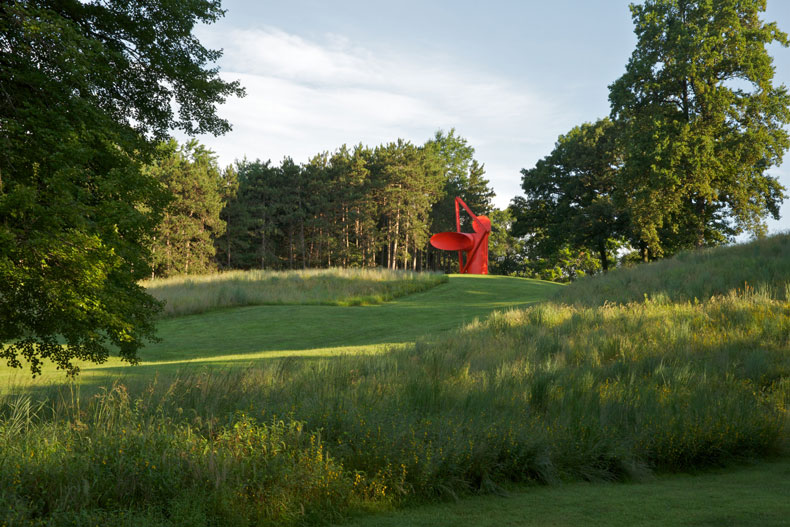
Adam (1970), Alexander Liberman
Storm King Art Center, New Windsor
Alexander Liberman’s monumental steel sculpture Adam stands as a striking abstract representation of humanity’s origins, giving ancient themes contemporary expression. Measuring 869 cm in height, and painted a vibrant red, the piece sparked controversy when it was first displayed outside the Corcoran Gallery in Washington, D.C. – President Nixon demanded it be moved somewhere less visible. Find out more on the Bloomberg Connects app by clicking here on your mobile device, or by scanning the QR code at the bottom of this page.
Adam and Eve (1909), Suzanne Valadon. Centre Pompidou, Paris
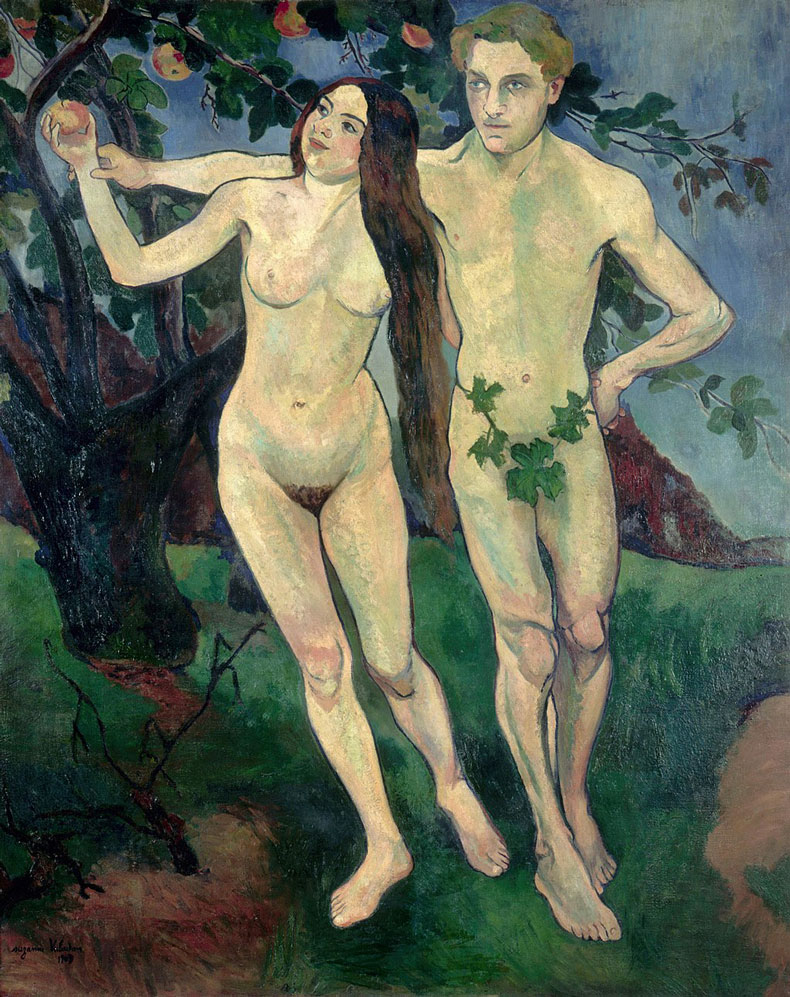
Adam and Eve (1909), Suzanne Valadon
Centre Pompidou, Paris
In her provocative painting Adam and Eve, Suzanne Valadon merges personal narrative with biblical allegory. She paints herself with her younger lover, dancing in an idyll that features a symbolic apple tree. Originally depicting Adam fully nude, Valadon later added vine leaves for modesty to satisfy exhibition standards at the time. This daring portrayal captures love, freedom and temptation with a sense of joyous abandon, yet not without ambivalence. Click here to find out more.
Satan (1833–34), Jean-Jacques Feuchère. Ashmolean Museum, Oxford
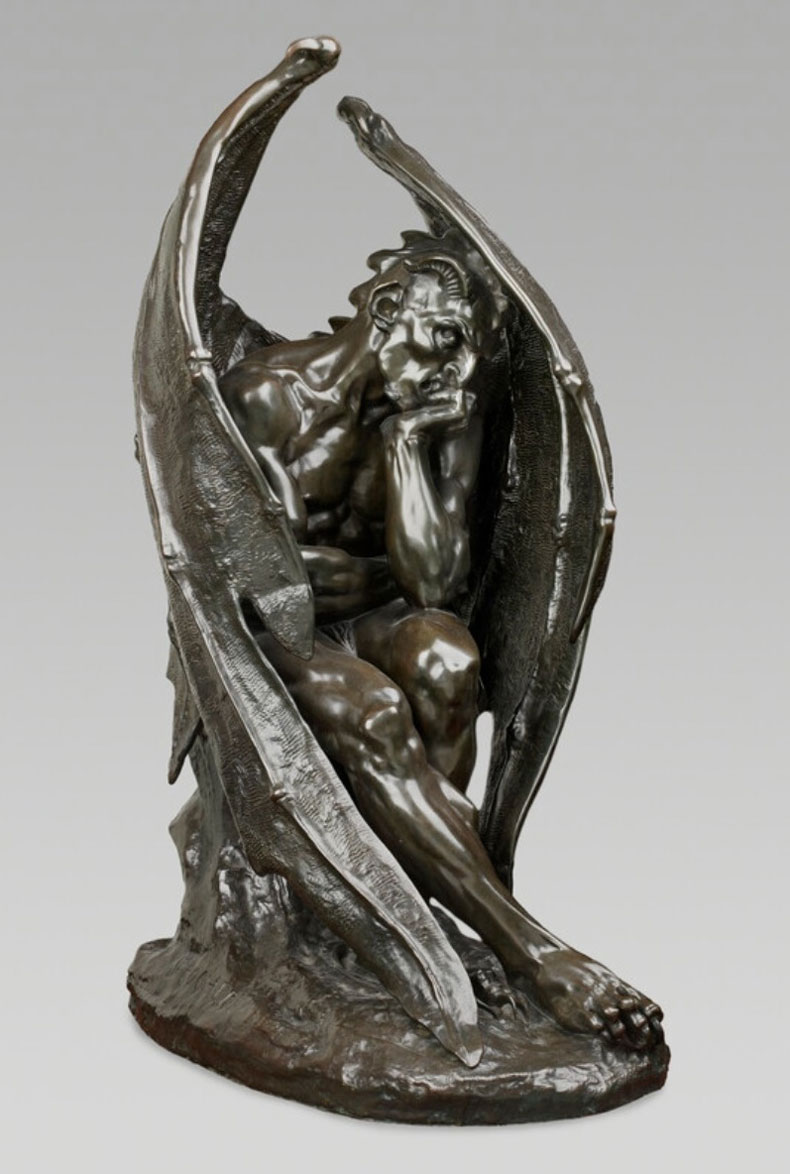
Satan (1833–34), Jean-Jacques Feuchère
Ashmolean Museum, Oxford
Jean-Jacques Feuchère’s bronze sculpture presents a contemplative interpretation of the fallen angel. With a furrowed brow and chin resting on his hand, he embodies a blend of melancholy and introspection. This portrayal invites empathy for the devil; it is reminiscent of Rodin’s Thinker yet predates it by several decades. With its dark patina and alternate identity as Mephistopheles, the work is part of a rich artistic tradition exploring the complexities of temptation and desire. Click here to find out more.
The Garden of Eden with the Fall of Man (1615), Jan Brueghel the Elder and Peter Paul Rubens. Mauritshuis, The Hague
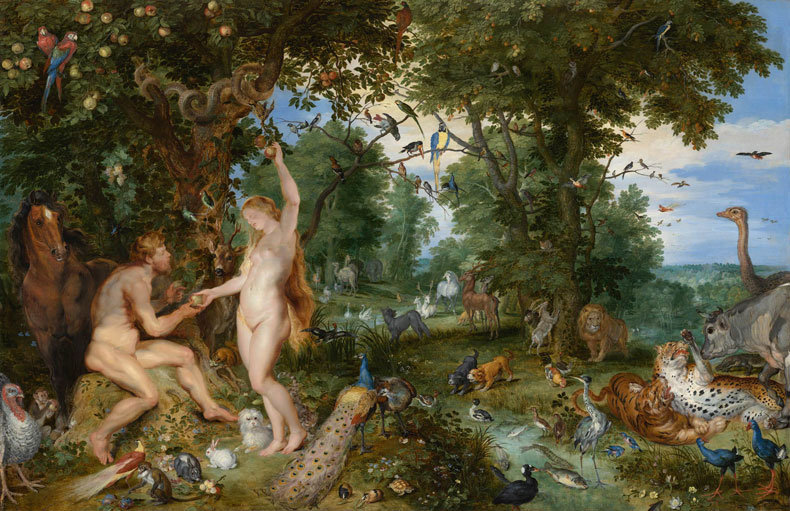
The Garden of Eden with the Fall of Man (1615), Jan Brueghel the Elder and Peter Paul Rubens
Mauritshuis, The Hague
This collaborative work by Rubens and Brueghel immerses viewers in the seemingly serene Garden of Eden. While Rubens fixes the narrative focus on Adam, Eve and the serpent, Brueghel’s intricate flora and fauna embody the beauty of creation. The scene captures the pivotal moment of temptation, illustrating the delicate balance between innocence and knowledge. This painting not only serves as a poignant reminder of humanity’s fateful choices but demonstrates the exceptional combined skill of this artistic partnership. Click here to find out more.
![]() ‘Four things to see’ is sponsored by Bloomberg Connects, the free arts and culture app. Bloomberg Connects lets you access museums, galleries and cultural spaces around the world on demand. Download the app here to access digital guides and explore a variety of content or scan the QR code.
‘Four things to see’ is sponsored by Bloomberg Connects, the free arts and culture app. Bloomberg Connects lets you access museums, galleries and cultural spaces around the world on demand. Download the app here to access digital guides and explore a variety of content or scan the QR code.


